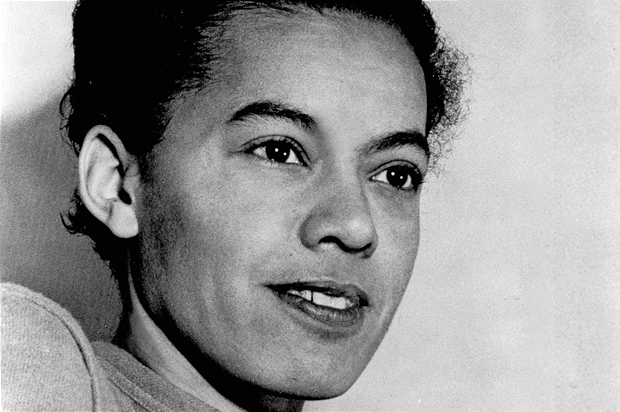Black, queer,
feminist, erased
from history:
Meet the most
important legal
scholar you’ve likely
never heard of
Ruth Bader Ginsburg is this
Supreme Court’s liberal hero,
but her work sits on the shoulders
of Dr. Pauli Murray
Ruth Bader Ginsburg has emerged as the liberal hero of a hopelessly right-wing Supreme Court, a ram in the bush for those of us who look on in horror as the court presides over the dismantling of key pieces of legislation like the Voting Rights Act, anti-discrimination law and affirmative action policy, which have been so critical to African-American advancement since the 1960s.
In a recent interview at Georgetown University, Ginsburg reflected on the history behind one of her key legal accomplishments, the 1971 case of Reed v. Reed. After an estranged couple lost their son, his mother, Sally Reed, petitioned to administer his estate. But Idaho law maintained that “males must be preferred to females,” in such matters. Ginsburg authored the plaintiff’s brief for the case when it reached the Supreme Court, arguing that the 14th amendment protected against discrimination based upon sex. When the court ruled in Sally Reed’s favor, it was the first time that the Equal Protection Clause had been applied to a case of sex discrimination.
But much of the legal groundwork for that argument can be attributed to Dr. Pauli Murray, a Howard University-trained lawyer, who began to argue in the 1960s, that the Equal Protection Clause should be applied to cases of sex discrimination in much the same way that it had been applied to cases of racial discrimination. Murray’s argument constituted what legal historian Serena Mayeri termed “reasoning from race,” in which race analogies were used to make clear the subordinate status of women. Though today we speak of these matters in the language of intersections, a term gleaned from legal scholar Kimberlé Crenshaw, it is Pauli Murray’s initial invocation of the race-sex analogy for black women’s positionality within the law that is the most direct precursor to Crenshaw’s theory of intersectionality.
Ginsburg named Murray and Judge Dorothy Kenyon as co-authors of her brief in the Reed case, because even though they didn’t help to write it, these two women had been pioneers in creating the legal strategy for fighting sex discrimination. Ginsburg’s choice to name these women as co-authors is a model for how to solve contemporary issues among young feminists over white feminists’ appropriation without attribution of the intellectual and political labor of women of color.
Pauli Murray is one of the most pivotal figures in 20th century African-American civil rights history, but beyond academic circles, she is not very well known. In 1944, she graduated as the valedictorian of her Howard University law class, producing a senior thesis titled “Should the Civil Rights Cases and Plessy Be Overruled?” Trained by William Howard Hastie and Leon Ransom at Howard, Pauli Murray had been witness to their early legal strategy of combating separate but equal doctrine by forcing states to either make black institutions equal to their white counterparts or integrate white institutions, if they failed to do so. However, she argued that Plessy v. Ferguson was inherently immoral and discriminatory and should be overturned. When she brought up this argument to her classmates, she noted that her suggestion was received with “hoots of derisive laughter.” Murray coined the term “Jane Crow” to name the forms of sexist derision she frequently encountered during her time at Howard. It was the piece she co-authored in 1965 called “Jane Crow and the Law” that Ginsburg cites as so influential in her thinking about legal remedies for sex discrimination. Nearly 10 years later, in 1953, Spottswood Robinson, Thurgood Marshall and others pulled out a copy of her senior paper and used it as a guide to strategize how they would argue the Brown v. Board case. They didn’t bother to mention this until about 10 years later, when she ran into Robinson at Howard Law School.



Thank You I will do my part to un-erase her.